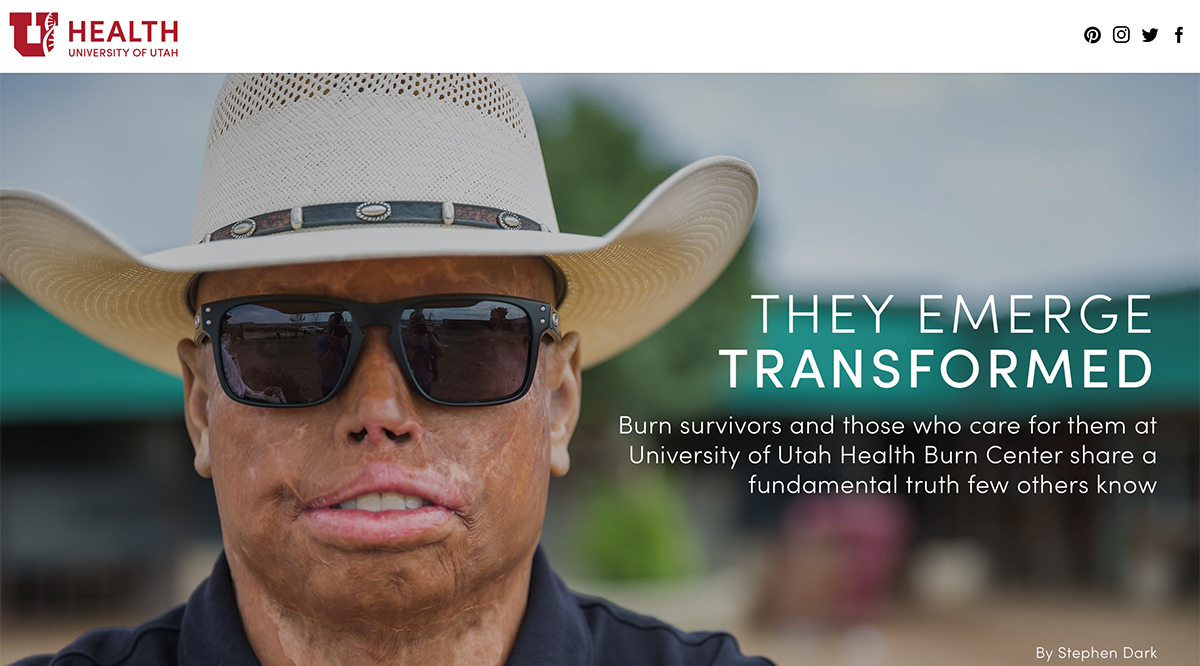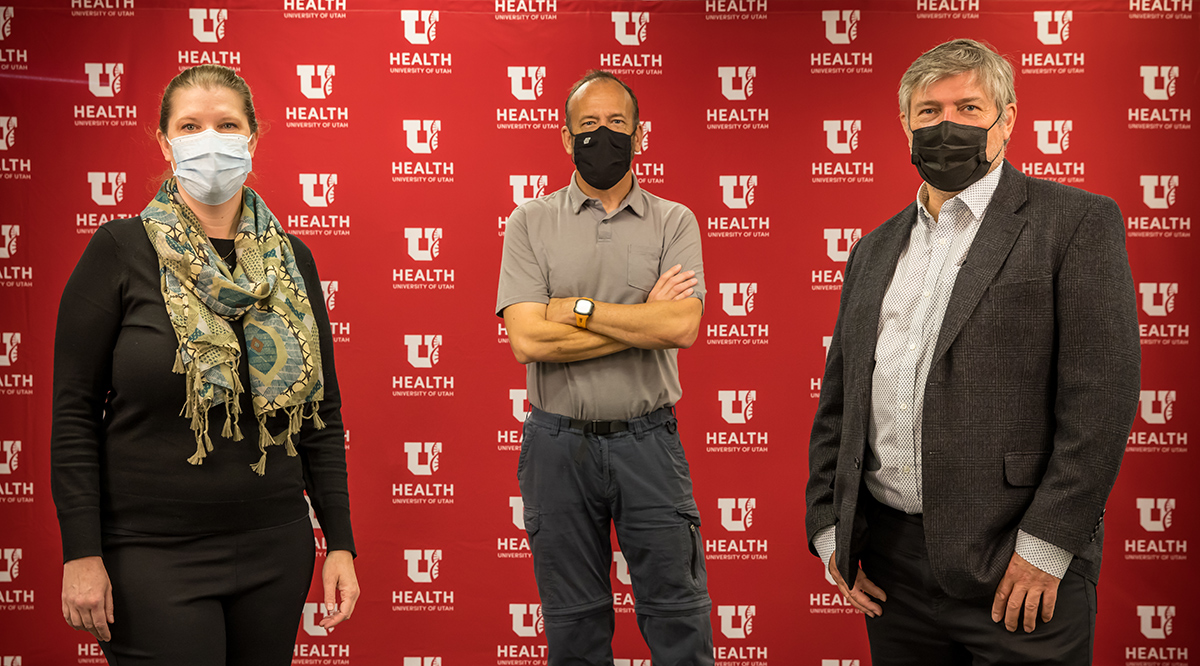
“They Emerge Transformed” by Stephen Dark
University of Utah Health
“They Emerge Transformed” is a tribute to burn care at University of Utah Health Burn Center, as told through the eyes of both veteran providers and the patients they look after. It’s structured around a narrative suggested by a framed quilt given to the unit by a grateful relative of a patient. The quilt’s four colors guide the onlooker through a journey of transformation. It begins with fire (the traumatic burn wound itself), then shifts to faith, healing and victory. Those four stages are illustrated by the stories of an oil worker badly burned in an explosion (fire), a native American injured by molten tar who drew on his belief system to get through the agony of wound care (faith), a young girl who caught fire while baking a cake at home and fought so bravely to overcome her injuries (healing), and the victories each achieved post-release, living life on their own terms. Threaded through their stories are the history of the Burn Center and the generations of staff who have dedicated so much of their lives to caring for these patients.
“When a new patient arrives, said Irma Fleming, MD, the newest surgeon to join the center, it’s as if they’re the bride or groom at a shotgun wedding. ‘We just got engaged when you all hit the door,’ she said. ‘The operating room will be our wedding.’”

What was the most impactful part of your award-winning entry?
The most powerful element is the bravery the three patients displayed in the unit and after. Each patient brings different perspectives to the horror of burns and the months of agony and exhausting work they endure to heal.
What is one thing you learned from this experience?
The fundamental truth of the Burn Center’s mantra that “it’s never just a burn.” Socio-economic issues and in some cases histories of trauma impact so many members of the marginalized community who make up much of the unit’s patient roster.
What challenge did you overcome?
Peeling away the layers to capture the dedication staff bring to burn care. It took a year to report on the unit, interview 20 staff, three patients and relatives, and shadow two surgeons to understand the unit’s complex, remarkable culture.
What was the biggest challenge in writing about this topic?
Two-fold. Finding a narrative structure to thread the stories together, which proved to be a framed quilt. And confronting the challenging realities of burn care, particularly the trauma and excruciating pain patients face during months of daily wound care.
Contact
Stephen Dark, stephen.dark@hsc.utah.edu